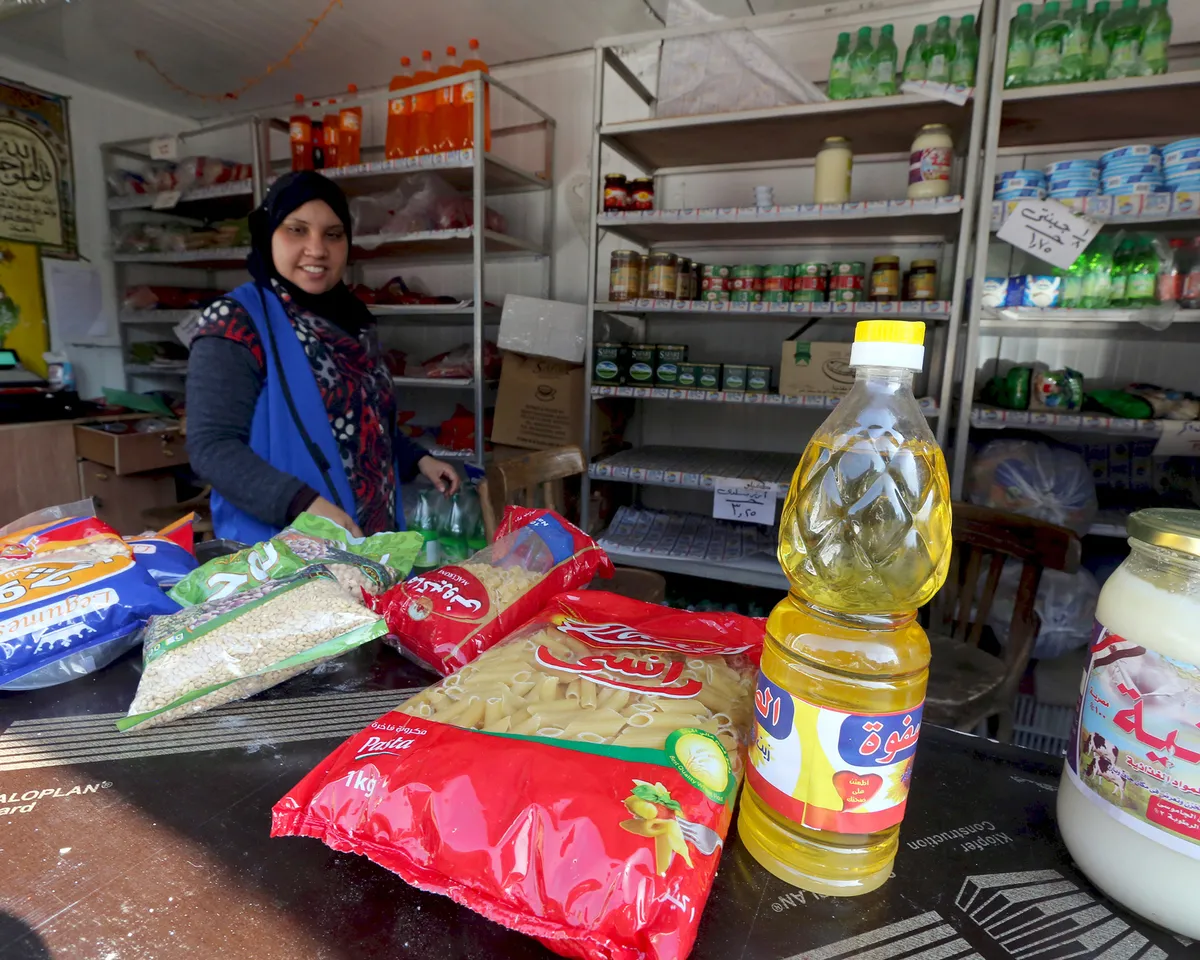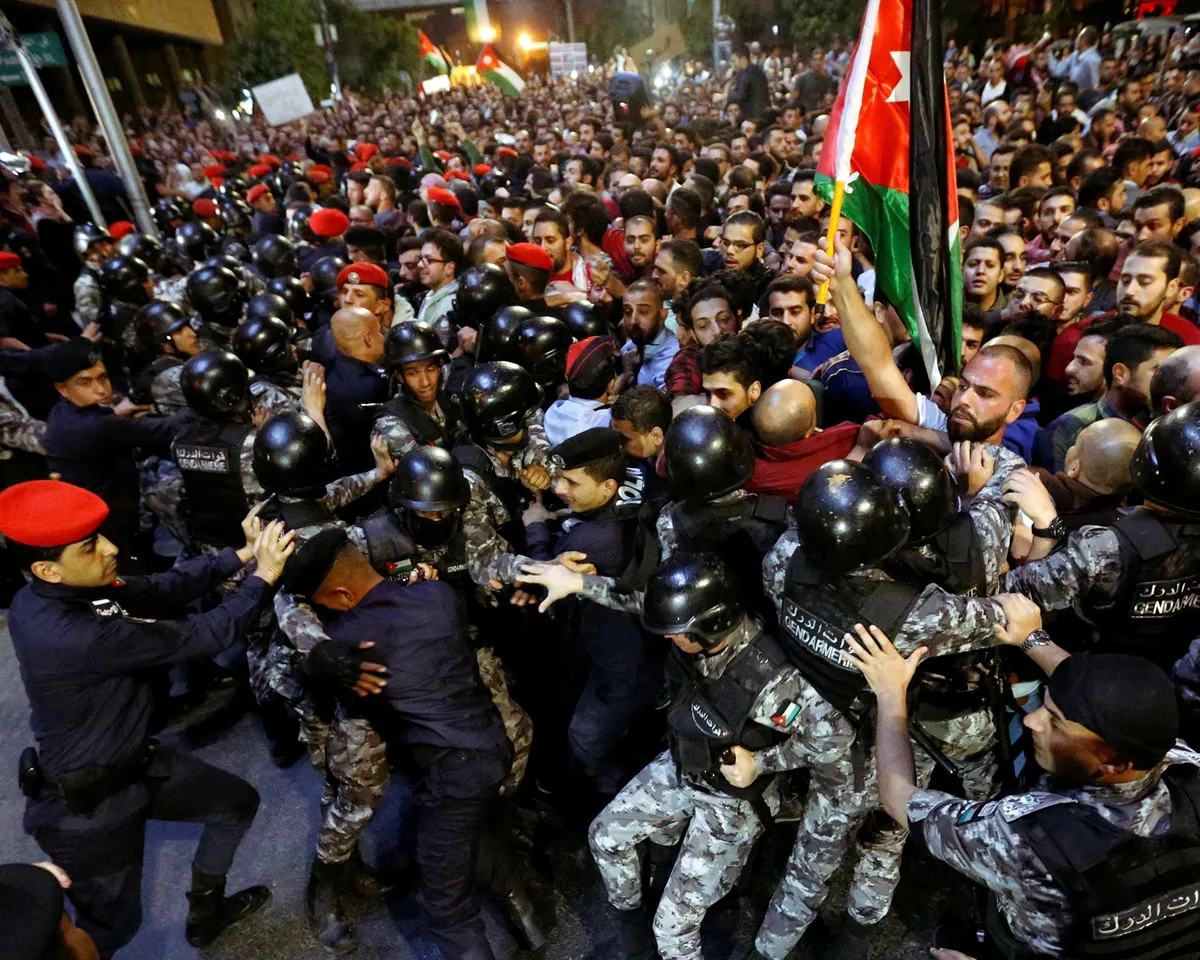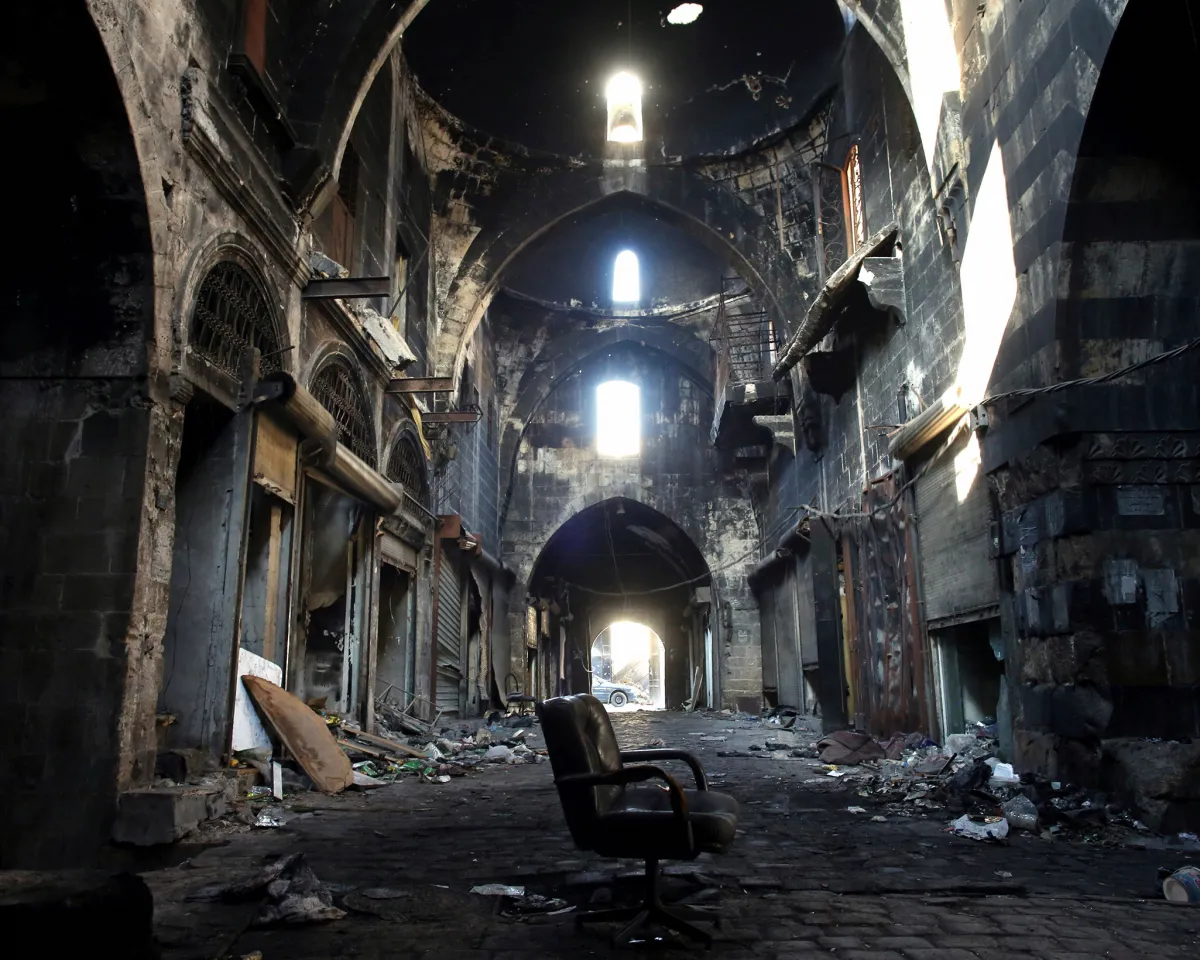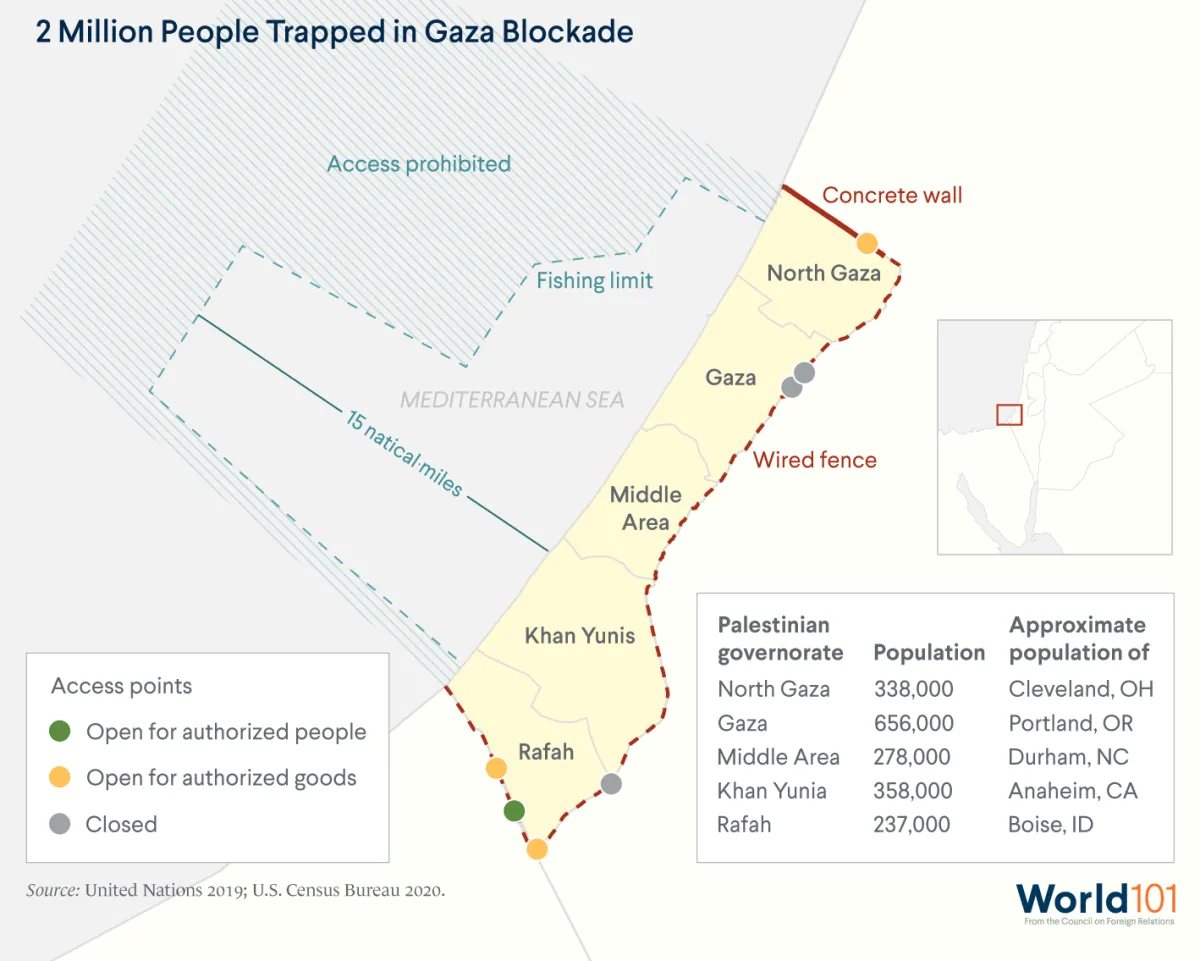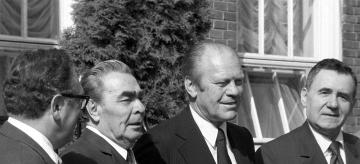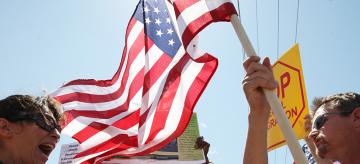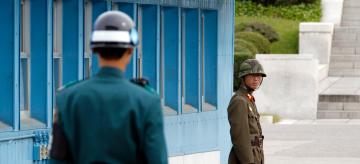Economics: Middle East and North Africa
The Middle East is a region of power imbalances and vast inequality where glitzy, high-tech cities border war-ravaged neighbors.
The Middle East is a region of power imbalances and vast inequality where glitzy, high-tech cities border war-ravaged neighbors. It’s a region where governments with exceeding wealth can afford to subsidize education, healthcare, and electricity for their citizens while those next door struggle with some of the world’s highest poverty and unemployment rates. So what accounts for such stark disparities? More often than not, just two things: oil and natural gas—the two resources that propel almost all of the region’s wealthiest economies. But simply sitting on vast energy reserves isn’t a guaranteed ticket to wealth. Amid the ever-shifting political realities of the Middle East, sudden wars, sanctions, and price fluctuations can upend the economic fortunes of even the mightiest oil-rich countries.
Oil and Natural Gas Propel Middle East
Oil and natural gas are the twin engines that power the Middle East’s economy. The region is home to 53 percent of the world’s proven oil reserves and nearly half of all known natural gas reserves. Together, these two resources account for 51 percent of all goods the region exports (compared to the global average of just 12 percent). For the handful of countries with vast oil and gas reserves, these resources have brought immense wealth—Qataris, Emiratis, and Kuwaitis are among the world’s richest citizens. Meanwhile, those countries with limited natural resources—for example, Yemen, Morocco, and Jordan—have citizens who earn less per capita than the global average. The result is a region of vast inequality where oil and gas serve as the quickest tickets to wealth.
Middle East’s Economy Rises and Falls With Price of Energy
Oil and natural gas account for 97 percent of the goods that Iraq exports (as well as 94 percent for Algeria, 87 percent for Qatar, 85 percent for Kuwait, and 76 percent for Saudi Arabia). On one hand, these natural resources can produce immense wealth. However, a government’s overreliance on a single industry like oil—at the expense of growing a diverse private sector—can be dangerous; this is known as the resource curse. When the global price of oil plummets, as it did in 2014, the drop can bring down an entire country’s economy. Kuwait, for example, lost 30 percent of its GDP in 2014 (for perspective, global GDP fell by only 5 percent both during this time and the 2008 recession). This economic shock resulted in oil-rich Gulf countries rolling back their extensive welfare programs and—in certain cases—even taxing their citizens for the first time. In 2016, Saudi Arabia announced Vision 2030, a multi-billion-dollar initiative to diversify the country’s economy and decrease its dependence on oil.
Oil Markets Convulse Amid Global Pandemic
COVID-19 has upended global oil markets, threatening a major source of the Middle East’s economy. At play are dual supply and demand challenges. On the demand side, global oil consumption has plummeted with air travel dramatically reduced, factories shuttered, and millions quarantining around the world in the spring and summer of 2020. Oil demand could fall by up to 8.1 million barrels per day in 2020, equal to nearly the entire consumption of India and Russia in 2019. To deal with this lower demand, the Organization of the Petroleum Exporting Countries (OPEC)—a Saudi-dominated group comprising fourteen major oil-producing countries—called on its members and Russia to lower oil production in order to raise prices. When Russia refused, Saudi Arabia flooded the market with cheap oil to force the Russians to capitulate, creating a supply shock. With decreased demand and increased supply, oil prices fell below $20 per barrel for the first time since 2002, and in the United States prices briefly dropped below zero. Despite OPEC and Russia reaching a deal in April, the Middle East’s oil exporters remain on track to lose nearly 3 percent of their GDP in 2020.
Pandemic Freezes Region’s Tourism Industry
Tourism is a vital part of the Middle East’s economy, with pilgrimage sites and tourist attractions bringing millions of visitors and billions of dollars into the region each year. However, two shocks have destabilized this industry over the past decade: the 2011 Arab Spring protests and the COVID-19 global pandemic. Political instability from the Arab Spring led to a 13 percent region-wide decrease in tourists in 2011, with the sharpest drops in Bahrain (44 percent), Syria (41 percent), Egypt (32 percent), Oman (29 percent), and Tunisia (27 percent). But COVID-19 could even top those dramatic figures. As of May 2020, 92 percent of Middle Eastern countries had partially or entirely closed their borders in order to curb transmission of the virus. Saudi Arabia suspended religious pilgrimages to the holy cities of Mecca and Medina, which attract millions of visitors and account for 7 percent of the country’s GDP. Meanwhile, Egypt suspended its tourism industry—which employs over 12 percent of the country’s workforce—in March 2020. Though the Egyptian government began reopening tourist hotels in May, public health officials warn that such steps could result in a second wave of infections.
Bloated Public Sectors Stymie Private Sector Growth
Many autocratic countries in the Middle East operate what’s known as clientelism, systems where governments—rather than the private sector—become the main providers for their citizens as a way to build goodwill for the leader of the country. For Gulf countries, this means using their immense oil and gas wealth to fund a series of welfare benefits, including free higher education for Emiratis, free electricity and water for Qataris, and monthly welfare payments for half of all Saudi households. However, for countries without such free-flowing oil revenue, this system of clientelism often means relying on foreign aid and remittances (money sent home from foreign nationals). Egypt provides subsidized goods—including bread, cooking oil, and fuel—to 60 percent of its population. Jordan, meanwhile, operates one of the world’s more bloated public sectors, with the government employing nearly 40 percent of all workers. Clientelism, however, often comes at the expense of long-term economic development, and unrest can emerge when these benefits eventually run out.
Economic Reforms Disproportionately Affect Lower Class
In the immediate aftermath of the 2011 Arab Spring, the Middle East was not only in political upheaval but also in economic turmoil. Unemployment was high in Jordan, inflation was more than double the global average in Egypt, and Tunisia’s economy was contracting. In response, the International Monetary Fund (IMF)—an organization that supports struggling economies—intervened with tens of billions of dollars in rescue loans to stabilize and ultimately restructure these three economies. In exchange for these loans, the IMF required Egypt, Jordan, and Tunisia to carry out economic reforms, known as austerity measures, that included raising taxes and eliminating costly government subsidies. The IMF believes these reforms will ultimately strengthen local economies, but, for right now, it means higher prices for daily goods like bread, electricity, and fuel in countries like Egypt, where tens of millions of people already live below the poverty line. In Jordan, these austerity measures sparked nationwide protests in 2018, which led to the ouster of the country’s prime minister.
Middle East Struggles With Youth Unemployment
More than one-quarter of the Middle East’s youth (ages fifteen–twenty-four) are unemployed, the highest levels of youth unemployment in the world. In the West Bank and Gaza, youth unemployment has reached 42 percent, more than triple the global average. Rates are similarly high in Jordan (37 percent), Tunisia (35 percent), and Egypt (30 percent), and these figures risk rising even further as COVID-19 drives up unemployment worldwide. Young women in the region are nearly twice as likely to be unemployed as their male counterparts. With 40 percent of university graduates unable to find jobs in the Middle East, these sky-high levels of unemployment are drivers of unrest. Millions of young men and women poured into the streets of capitals across the Middle East to demand jobs—in addition to social, political, and economic reforms—in the 2011 Arab Spring. To this day, nearly a decade after the ouster of their country’s repressive leader, young Tunisians continue to protest for jobs.
War Leaves Economic Toll on Region
Wars in the Middle East have claimed hundreds of thousands of lives over the past decade. They’ve also caused tremendous economic ruin—just take a look at the region’s deadliest ongoing conflict, Syria’s civil war. To begin with, there’s the destruction to physical infrastructure, things like factories, hospitals, and roads. Then there’s the damage to historical and cultural artifacts—Aleppo’s famed citadel, Palmyra’s ancient temples, scores of churches and mosques. Perhaps most devastatingly, communities have lost entire generations of young men and women to fighting and displacement, people who in peacetime compose the country’s workforce. The United Nations estimates it will cost at least $250 billion to rebuild the country. Syria’s president puts that figure as high as $400 billion, several times the country’s pre-war GDP, or roughly the size of the United Arab Emirates’ economy. Meanwhile, the United States and the European Union refuse to fund reconstruction without a political transition in Damascus, and Syria’s allies—Iran and Russia—are unable to float the massive bill. As such, even when fighting finally ends, it will still take decades before Syria can recover economically.
Sanctions Used Widely to Advance Foreign Policy Priorities
Sanctions are yet another economic outgrowth of conflict in the region. Foreign powers use these economic penalties as a low-cost alternative to war and as a powerful foreign policy tool to advance goals related to nonproliferation, counterterrorism, and conflict resolution. Sanctions can come in several forms, such as asset freezes, travel bans, and the blocking of business dealings with blacklisted countries. Currently, eight Middle Eastern countries face some form of sanctions from the United States, the United Nations, or the European Union. Iran, for example, has been under sanctions from the United States for over forty years—first in response to the country’s taking of American hostages in 1979 and more recently in response to its nuclear weapons program. Sanctions against Iran largely target its oil industry by threatening potential importers (like India, Japan, or Turkey) with penalties should they purchase from Iran. Sanctions have cost Iran billions of dollars in lost revenue and, by some estimates, as much as 20 percent of its economy.
China: The Middle East’s Top Trading Partner
Over the past twenty years, China has quickly become the Middle East’s top trading partner, eclipsing the United States. China turned to the region in the early 2000s in search of energy to fuel the country’s economic rise, and today oil and natural gas account for 72 percent of all goods China imports from the Middle East. At the same time, China—the world’s manufacturing capital—exports over one hundred billion dollars of goods to the region, including computers, clothing, and furniture. China is also constructing sweeping infrastructure projects across the region as part of its global Belt and Road Initiative (BRI). These projects include building a new industrial city in Oman, shipping lane expansion in Egypt’s Suez Canal waterway, and development of the Israeli port of Ashdod. China hopes these projects will promote its political, military, and economic influence in the region and simultaneously expand its access to a market that accounts for nearly half of its crude oil supplies.
Start-Up Nation: Israel’s Success in Tech and Innovation
Seven countries in the Middle East have citizens who earn more per capita than the global average ($11,300 per year). Each of those countries made their wealth largely through oil and natural gas, except for one: Israel. Though Israel recently discovered huge offshore gas reserves, it became wealthy through a diverse private sector that exports medicine, cut diamonds, heavy machinery, and arms. But the country’s most famous industry is its high tech sector. Israel has produced pharmaceutical giants, titans of the defense industry, and cutting-edge start-ups while also hosting research labs for multinational tech companies like Apple, Facebook, Google, and Intel. It’s often called Silicon Wadi (“valley” in colloquial Hebrew), a reference to California’s start-up-centric Silicon Valley. Israel’s success in innovation largely comes from government investment in tech and education, a military (the Israel Defense Forces) that cultivates high tech talent, billions of dollars in U.S. military assistance, and immigration policies that attract world leaders in science, technology, engineering, and mathematics (STEM). This booming private sector, however, does not benefit all Israelis: Arab Israelis earn on average 41 percent less than their Jewish counterparts, while 45 percent of ultra-Orthodox Jews live under the poverty line.
Blockade of Gaza Reveals Region’s Stark Inequalities
The Middle East is a region of power imbalances and vast inequality where glitzy, high-tech cities border war-ravaged neighbors. Arguably nowhere are these contrasts clearer than in the forty miles separating Tel Aviv—Israel’s tech capital—from Palestine’s Gaza Strip. Today, Gaza is effectively an open-air prison; the enclave’s two million residents are unable to leave without permission from Israel or Egypt. Gaza’s two neighbors imposed a near-total land and sea blockade in 2007 after Hamas (a United States–designated terrorist organization) took control of the Palestinian territory and used it to periodically launch rocket attacks on Israeli towns and cities. This blockade carries real economic consequences for average civilians. Today, more than half of Gazans live in poverty. Unemployment rates are over 50 percent (for women, it’s nearly 75 percent). Electricity is scarce, the water supply is often contaminated with sewage and salt water, and hospitals frequently lack access to the fuel needed to run their generators. All told, the United Nations calls Gaza—one of the most densely populated places in the world—effectively “unlivable.” In 2019, Israel and Hamas began negotiations to reach a long-term truce and alleviate Gaza’s humanitarian situation, but a deal is yet to be finalized.

